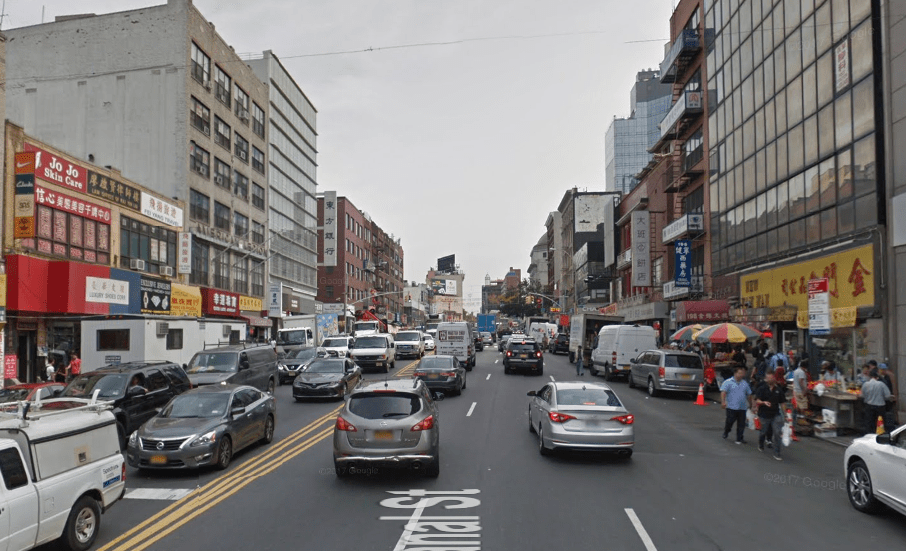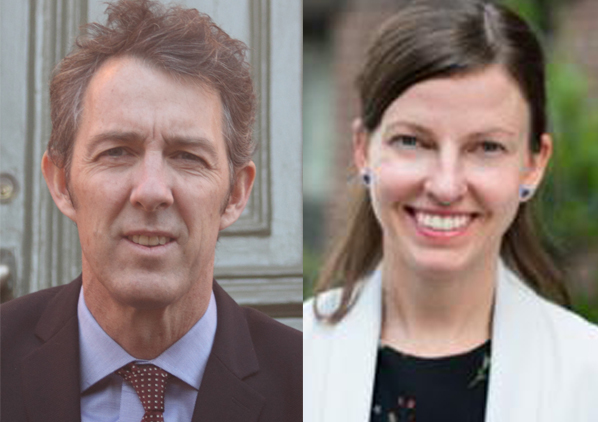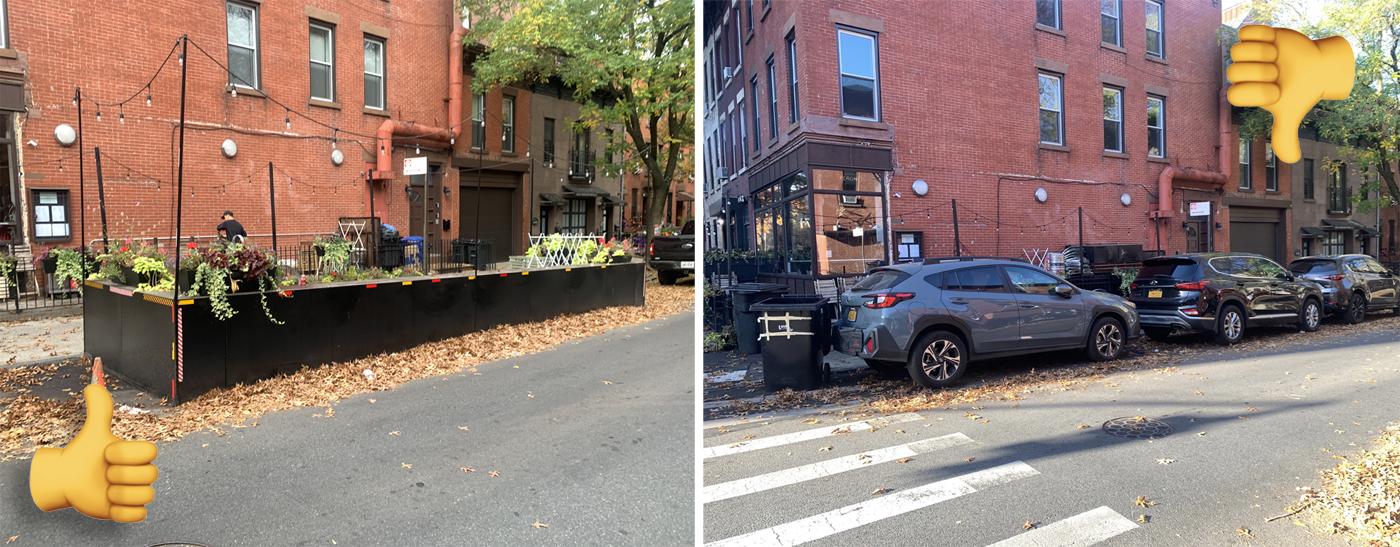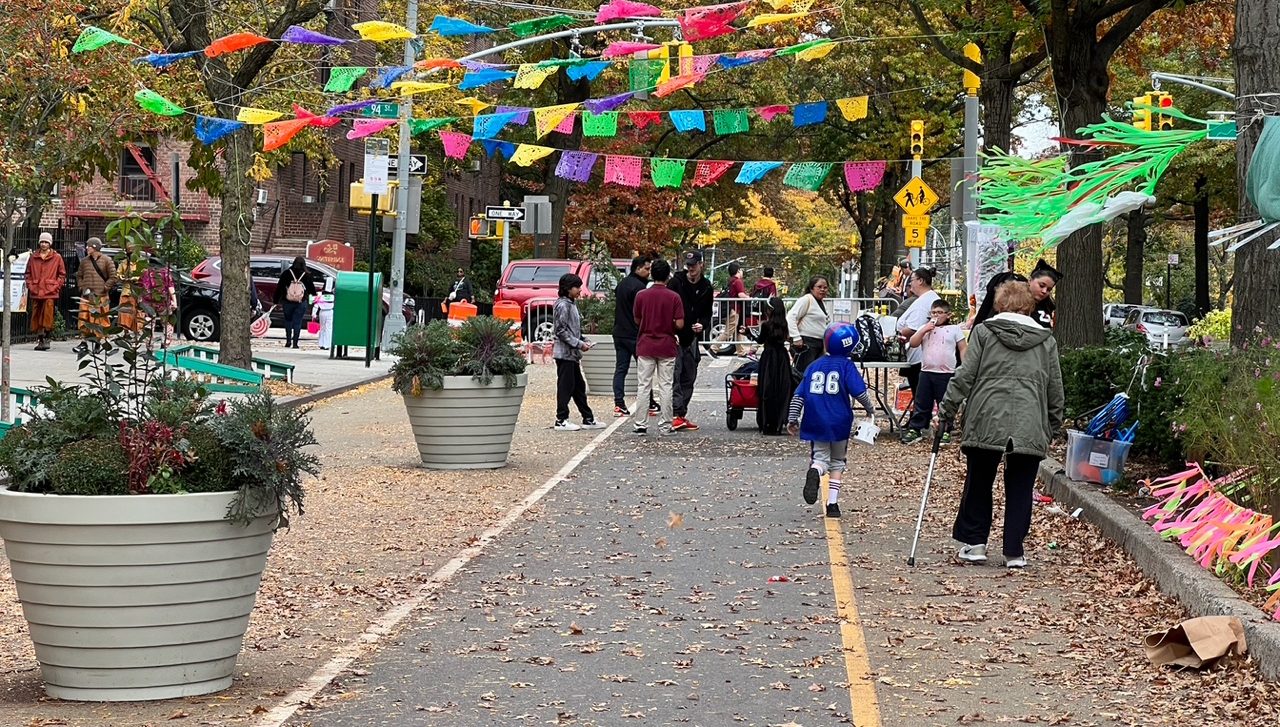New York made history this week.
Governor Cuomo and the state Legislature included the nation’s first ever congestion pricing program in New York State’s FY2020 budget on April 1. The budget authorizes the MTA, in cooperation with the city, to establish a congestion pricing tolling system around Manhattan’s Central Business District.
The budget legislation creates a solid framework for the plan’s design and implementation while leaving some of the specifics to the MTA to work out, with input from a newly formed board, over the next 20 months. The budget also mandates a number of reforms to how the MTA is governed and managed.
Here is what has been established so far:
The Basics of the New CBD Tolling Program
- The legislation is referred to as the “traffic mobility act” (TMA) and outlines “a program to establish tolls for vehicles entering or remaining in the most congested area of the state…”: Manhattan south of and including 60th Street.
- Passenger vehicles will only be tolled once per day.
- The “operation” date shall be “no sooner than Dec 31, 2020,” which we read to mean it will start on January 1, 2021 as the MTA has every reason to want to get the revenue flowing as soon as possible.
- The authority has said it has already initiated the process of issuing bonds against the new statutorily mandated revenue.
- There must be at least a 30 day testing period and 60 day public information campaign prior to launching of the tolling program. In recent days, MTA Chair Pat Foye has committed to public hearings, similar to what the agency organizes for fare and toll hearings.
- Installation of tolling infrastructure shall not be subject various state and city environmental or other laws.
- The budget also includes a separate $100M for the MTA to plan, design, procure and install the new tolling technology and infrastructure.
The City’s Role
- The bill requires the MTA and the City to enter into a Memorandum of Understanding (MOU) – within 60 days from bill signed (by ~May 31) – that prescribes how they will work together to plan, design, install, and maintain the new tolling system (and signage), though ultimate authority and responsibility will rest with the MTA’s tolling agency, the Triborough Bridges & Tunnel Authority, or “TBTA.”
- The Mayor also gets to appoint one member to the six-member “traffic mobility review board.”
The Traffic Mobility Review Board
- Congestion pricing details, including rates and any further exemptions, are to be recommended by new six-person traffic mobility review board (“TMRB”) – one chair plus five members – with one representative each drawn from LIRR and MNR territory, and, as mentioned, one appointed by the Mayor. All but the Mayor’s appointee will be appointed by the TBTA (i.e., MTA/Governor). All shall serve without compensation. The recommendations are non-binding and must be delivered no sooner than November 15, 2020 and no later than December 31, 2020, or 30 days before tolling program to go into effect, whichever is later.
- The TMRB has a broad mandate to recommend toll rates and variable (“time-of-day”) pricing structures, possible further exemptions (credits or discounts), though the latter must be informed by a traffic study. The TMRB is also authorized to consider further changes to the FHV surcharge system that went into effect in February, with consideration of a number of factors including initial market entry costs associated with licensing and regulation, comparative contribution to congestion in the central business district, and general industry impact.”
- Specifically, the TMRB can consider “traffic patterns, traffic mitigation measures, operating costs, public impact, public safety, hardships, vehicle type, discounts for motorcycles, peak and off-peak rates and environmental impacts, including but not limited to air quality and emissions trends.”
- The TBTA and NYCDOT shall complete a traffic study on traffic inside and around the CBD to be used by the TMRB as it considers its pricing options.
- New York City shall study the impact of tolling plan on parking within and around the CBD to be completed 18 months after the date the tolling program goes into effect.
- The TMRB shall review the MTA capital plans – though the legislation doesn’t indicate what authority the TMRB will or will not have over MTA capital planning.
Financial Targets and the Lockbox
- The TBTA is authorized to set variable tolls, so long as the annual revenue generated, minus operating expenses, is enough to bond against to raise a minimum of $15B in capital funding for the 2020-24 MTA capital program...and successor programs.
- A central business district tolling capital lock-box fund will be created to protect all of the revenues identified in this section.
- The budget includes additional MTA funding that will come from an internet sales tax ($5B) and a new “mansion tax” (i.e., an increase in the real estate transfer tax - also $5B).
Split among agencies
- Funds will be distributed from the lockbox with an 80-10-10% split between NYCTransit, LIRR, and Metro North. The NYCT share shall be primarily invested in the subway system (new signaling, new subway cars, track and car repair, enhanced accessibility) as well as buses and bus system improvements and expansion of service into outer borough areas with a history of limited transit options. Similar language, including with regard to expanding transit availability, applies to LIRR and MNR territories.
Current Exemptions
- Any vehicle using FDR Drive or Route 9A (a.k.a. “West Street” and “West Side Highway,” including any roadway connecting 9A to the Hugh L. Carey Tunnel).
- Emergency vehicles or vehicles transporting disabled person(s)
- Residents of the CBD making less than $60,000 per year (adjusted gross income) are entitled to a tax credit equal to the amount paid for tolls (except if the toll is claimed as a business expense).
- MTA Chairman Foye has said the MTA will figure out a way not to charge people who cross the 60th Street boundary in the act of moving their cars to comply with alternate side of the street parking rules.
- Additional exemptions could be proffered by the Traffic Review Mobility Board whose recommendations are due between Nov. 15, 2020 and Dec. 31 2020. The TBTA will review and vote on the non-binding recommendations before it finalizes the tolling system.
Reporting
- The budget mandates the MTA, with the assistance of NYC DOT, issue public performance reports a year after the tolling system goes into effect, and every two years thereafter. Financial reports on spending are due every year. Reports will address congestion changes (for FHVs and transit); vehicle miles traveled for FHVs; traffic volumes for all vehicle types; environmental/air quality improvements; congestion reduction measures; changes in transit ridership and bus speeds within the CBD; and all receipts and expenditures for the entire tolling program.
MTA Reform
The budget also addresses MTA reform, including 12 recommendations previously supported by Gov. Cuomo. The budget:
- requires an MTA personnel and reorganization plan by June 13, 2019. The budget says this could include consolidation of departments or divisions. The MTA board will consider the plan and approve any changes within 90 days of the report’s issuance,
- modifies the terms of MTA Board appointments to align with those who made the appointmentsrequires the MTA to undergo an independent forensic audit and efficiency review by Jan 2020 and requires it to be posted publicly,
- calls for a major construction review unit made up of outside experts to review major projects including signal system upgrades, communications based train control and ultra-wideband technology for use within the New York City subway system before they shall be implemented. The review of any project or system upgrade referred to the review unit shall be completed within thirty days from the submission of such project or system to the review unit.implements a 20-year capital needs assessment beginning in 2023,
- increases the competitive procurement threshold from $100,000 to $1 million and establishes a 30-day review notice for NYS comptroller contract approval,
- requires public reporting on MTA performance metrics,
- requires any Capital Program Review Board member who does not approve of the MTA capital plan to issue a written explanation for his/her veto,
- gives the MTA the opportunity to respond and revise the plan so the member may withdraw their veto,
- allows the MTA to debar any contractor that exceeds ten percent of the contract cost or time on a capital construction project,
- requires any MTA capital project over $25 million to use design-build, which should save the MTA time and money.
What’s Next?
With congestion pricing now on the books, the process outlined in the budget will unfold over the next 20 months. Here’s what we will be watching:
- Appointments to Traffic Mobility Board: These appointments will be important to ensuring that the board puts forward thoughtful recommendations that advance the aims and fulfill the full promise of congestion pricing.
- Exemptions: Representatives from every political district, trade group, industry, and special interest will be vying for their particular interest to be exempt from the new tolls. There are essentially two kinds of exemption: (a) those for drivers who cross another tolled facility on route to the CBD – e.g., the George Washington, Mario Cuomo (Tappan Zee), Henry Hudson bridges – and would thus face a “double toll” (despite drivers commonly pay a double toll when making any number of trips across the city region), and (b) different types or classes of driver who believe they are entitled to relief from the new tolls. A factor that should limit the number of exemptions is that the $15-billion minimum required militates against an excess of carve-outs because for every driver exempted there will be another driver who has to pay more as a consequence. Nonetheless, there will be enormous pressure on the TMRB, elected officials and the MTA to exempt everyone and their grandmother.
- Lincoln/Holland/Midtown/Battery Tunnels: These crossings were not exempted from the new CBD toll in the budget language. It’s logical to credit tolls paid on existing facilities that lead directly into the CBD and such a toll credit was previously proposed.
- West Street/9A exemption: An exemption for drivers using Route 9A made it into the final budget late in the process. This raises some complications, most notably, that the large number of entryways into the cordon could greatly increase implementation costs. Further, drivers could pile up on 9A trying to access garages west of the highway that would enable them to avoid the CBD tolls.
- George Washington Bridge exemption: NJ and NY lawmakers are calling for an exemption to the George Washington Bridge. It's conceivable there could be a noticeable increase in the number of vehicles traveling through the already congested Lincoln Tunnel to avoid paying a double toll to cross the GWB and then 60th Street to get to the CBD. On the BQE in Brooklyn, 25 percent of the traffic along the cantilever section is currently bypassing the Battery Tunnel, which has a toll, for a free bridge crossing further north. If New Jersey drivers were to similarly bypass the GW Bridge for the tunnels, Manhattan-bound buses and car drivers could see a significant increase in congestion in the Hudson River tunnels, as could the Hell’s Kitchen and SoHo neighborhoods.
- Passenger vs. Commercial Vehicle Once Per Day Cap: The budget puts a once a day cap on passenger vehicles, not commercial vehicles. But small businesses in Queens and Brooklyn, in particular, have good reason to be unhappy with this omission. We advocates would prefer to see a once-per-day cap on commercial vehicles tolls than passenger tolls.
- City/State coordination and control: The MTA/TBTA will be taking control over the entry points to the congestion zone, which has raised concerns among some city leaders who view it as an encroachment on their home rule powers. A possible mitigating factor is that the City will have the chance to negotiate the terms in the MTA/city MOU.
- Capital program: The release of the 2020-2024 capital program will happen this fall (likely October), and will provide more detail about what projects congestion pricing revenue will pay for.
Alex Matthiessen is the president of Blue Marble Project, an environmental consulting firm based in New York City, as well as founder and director of Move NY, a campaign launched in 2010 to bring congestion pricing to New York City.
Kate Slevin is senior vice president of Regional Plan Association and has been advocating for congestion pricing since 2007. Previously, she was executive director at the Tri-State Transportation Campaign and Assistant Commissioner of Legislative and Community Affairs at NYC Department of Transportation.







